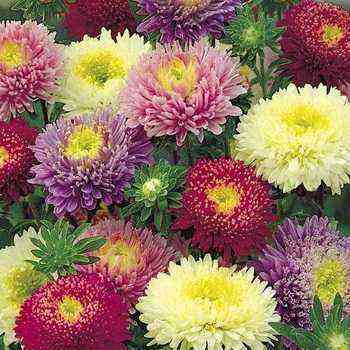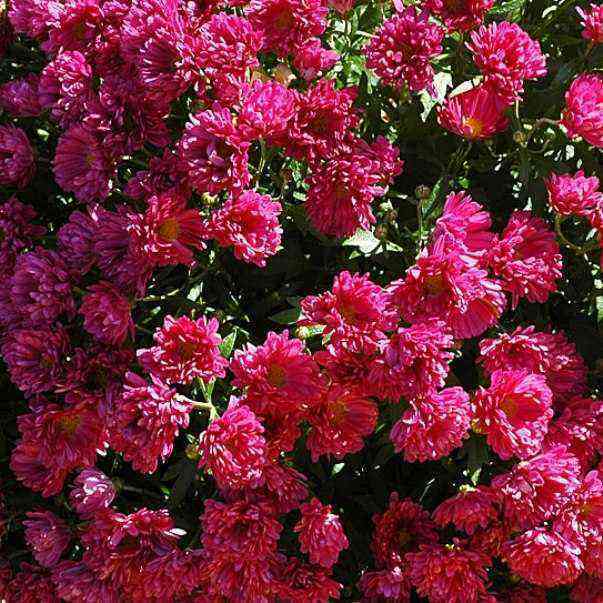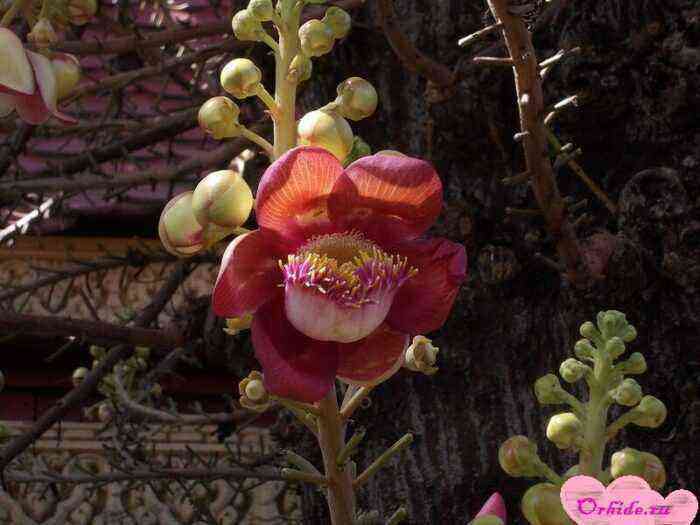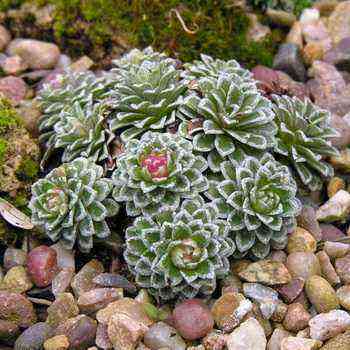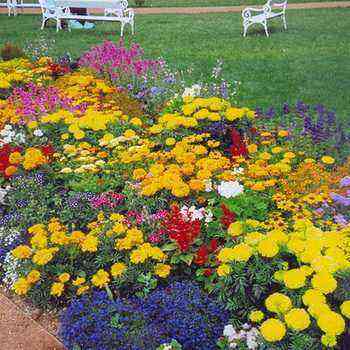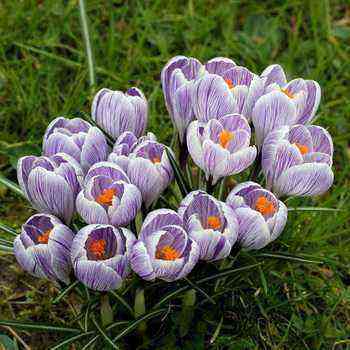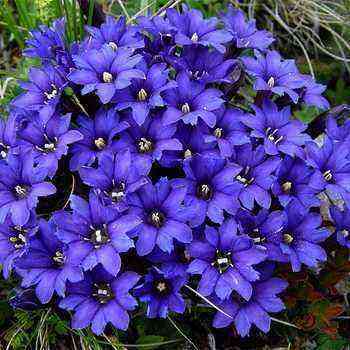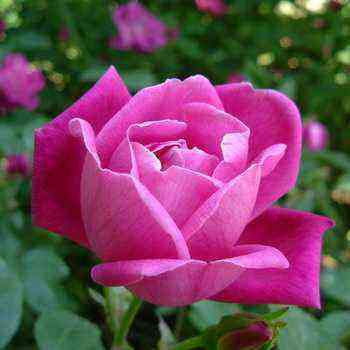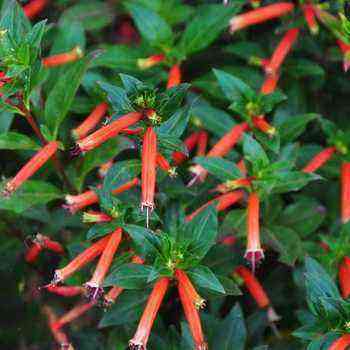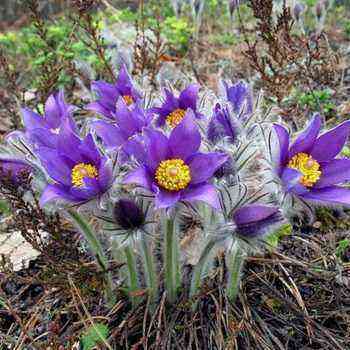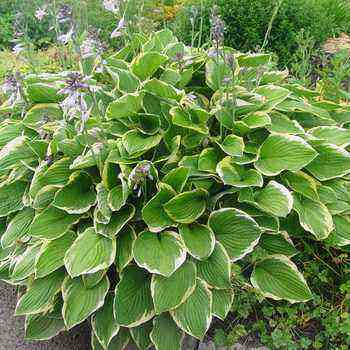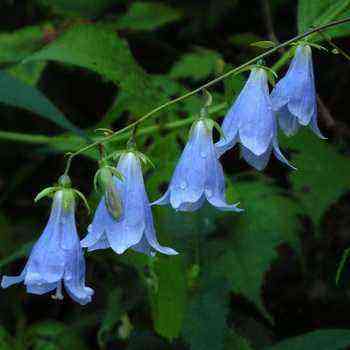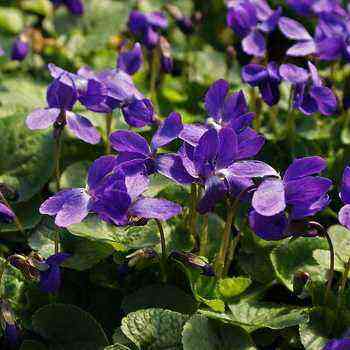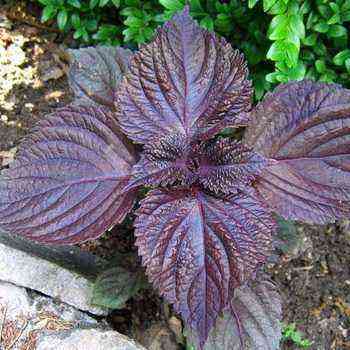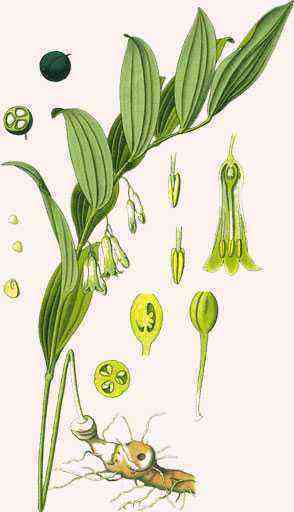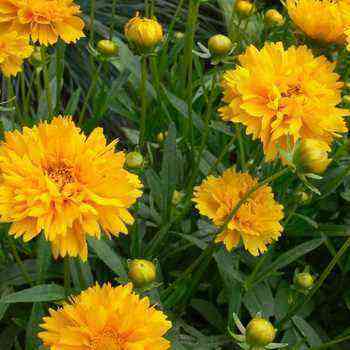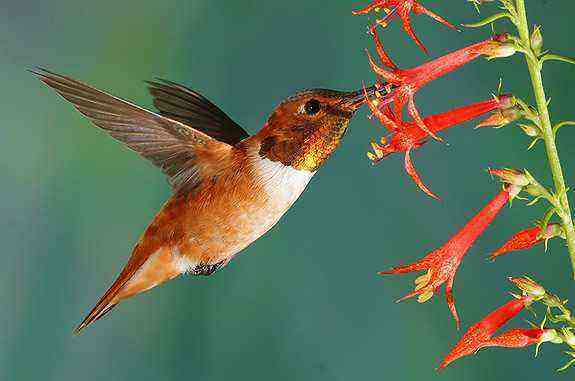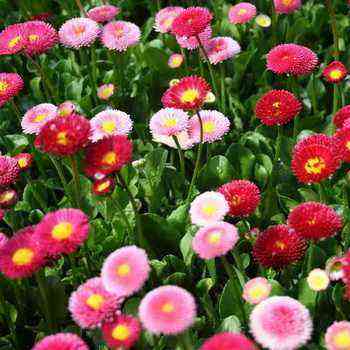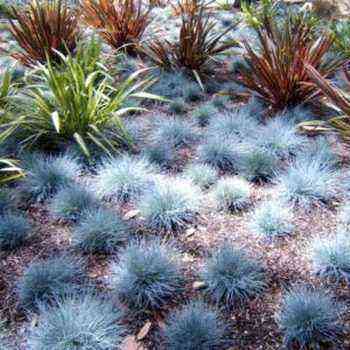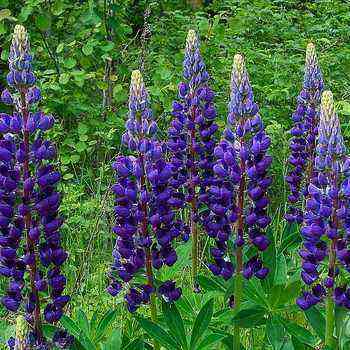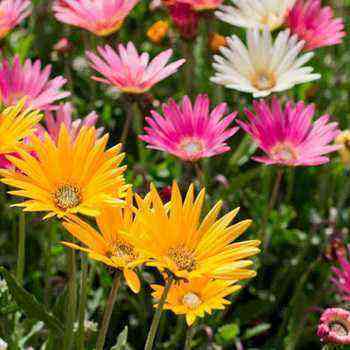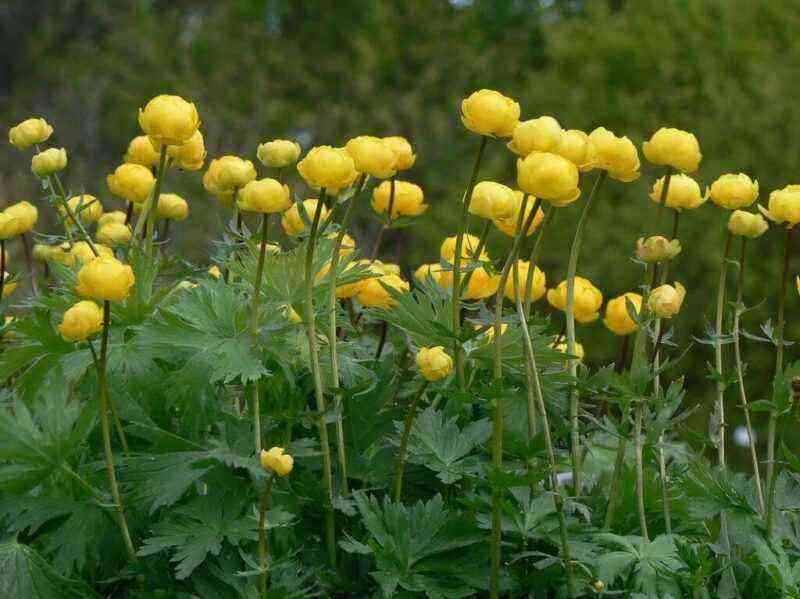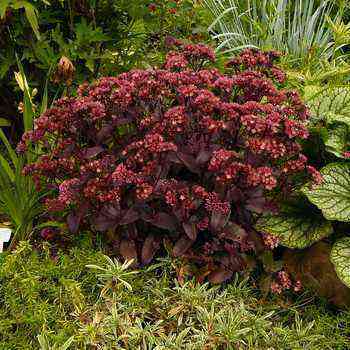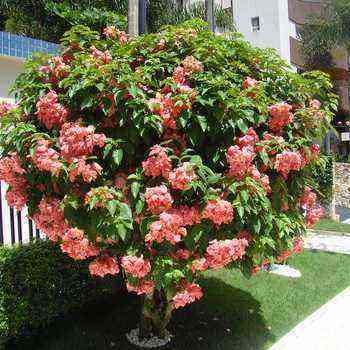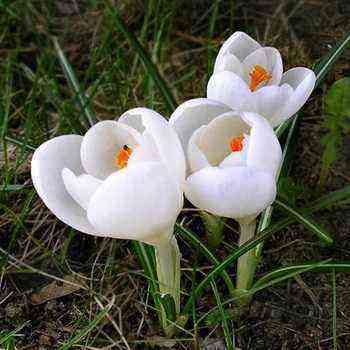Numerous flowering plants that do not require special care help to decorate your garden without much hassle and worries. These types include lavatera flowers, which are available to growers in annual and perennial crops. There are numerous varieties on sale that may differ in stem height and bud color. We invite you to find out all the necessary information about the flowers of the lavater: varieties, planting and care rules in the process of growing from seeds. You can also see numerous photos of Lavatera flowers in flower beds, in rockeries and in a pot culture.
To begin with, it is worth clarifying that this ornamental plant is perfect for both monotonous gardening, and for group plantings surrounded by other flowers and ornamental green crops. Feels great on balconies and loggias. With proper care, it can be grown as a room crop with a long flowering period.
Description of the Lavater flower and its photo
The lavatera flower belongs to a species of mallow flowering plant varieties. The first description of Lavater was given by doctors with the surname Lavater. These were two brothers who were fond of not only traditional therapies, but also constantly studied the diversity of the flora of our planet. They applied the methods of traditional medicine and constantly observed the healing properties of various plants. They discovered a beautiful flower in the wild on the European continent, not far from Zurich. However, biologists later found similar flowers in North America and on the coast of Australia.
You can see a photo of the Lavater flower in all the variety of petal colors below:
After the discovery, the culture was subjected to selection, as a result of which botanists managed to obtain two main varieties: perennial lavatera and annual flower. Perennial lavatera is currently of particular relevance, which during the first vegetative year is able to develop a powerful root system extending 1 to 1.5 meters deep into the soil. This allows the culture to perfectly tolerate even the harshest climatic conditions in winter. The first shoots appear immediately after the snow cover melts. Flowering begins after the temperature on the soil surface reaches 10-15 degrees Celsius. Duration of flowering – until the first frost. There is a popular name for the flower – “Dog Rose”. Differs in a variety of sizes and colors of buds.
Another variety of Lavatera flowers differs in that it is grown as an annual. 
Lavatera three months
Another popular variety is Lavatera three months old, which is grown mainly from seeds by sowing in the ground or as seedlings. In adulthood, the branchy bush reaches a height of 120 cm and is completely covered with bright buds. This gives the plant special decorative properties.
The leaves are magnificent, which are attached to a powerful stem. On the lower tiers, they have the shape of elastic, rich green hearts, which, as the height of the stem increases, gradually transform into triangles. However, as they grow and develop, they also turn into heart-shaped saucers. The older the age of the bush, the richer the color of its vegetative mass. When pale green leaves appear, it serves as a signal that it is time to add the next portion of nitrogen and phosphorus fertilizers.
The flowers of the three-month-old lavatera can reach up to 12 cm in diameter. The smallest bud diameter is 7 cm. In shape, they are delicate gramophone with fused petals. From a distance, a flowering bush can be easily confused with roses of non-double varieties. Coloring can be from pure white to various pastel shades: pink, salmon, blue, lilac. Lavatera flowers of perennial bright burgundy and crimson color look great. But just in order to emphasize all their splendor, flower crops with more muted tones of flowering should be planted nearby.
Look at these photos of a perennial lavater and you will understand that it is absolutely in vain that you have not yet planted such a culture on your site: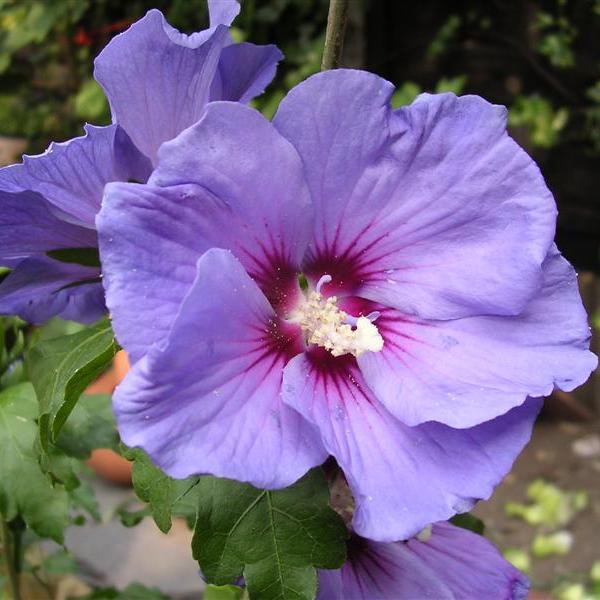
Lavatera varieties for growing from seeds
Choosing the right type of plant will greatly facilitate the subsequent maintenance of the garden. We invite you to find out about the most popular varieties of Lavatera for growing from seeds by seedling and by sowing in the ground.
The most beautiful and cold-resistant variety is Lavatera “Krasotka”, which is characterized by fast growth and excellent flowering with many colors of buds. Seedling growing is preferred. However, in this way it is possible to grow the Barnsley Lavater, which is a great mix of colors and bud shapes. A distinctive feature is the presence on one bush of many different-sized buds, which give the impression of a rose bush. Let the ruby lavater, which got its name due to the rich red color of flowers and the sharp contrast of the buds with the deciduous mass of the bush, do not stand aside from your attention.
However, in this way it is possible to grow the Barnsley Lavater, which is a great mix of colors and bud shapes. A distinctive feature is the presence on one bush of many different-sized buds, which give the impression of a rose bush. Let the ruby lavater, which got its name due to the rich red color of flowers and the sharp contrast of the buds with the deciduous mass of the bush, do not stand aside from your attention.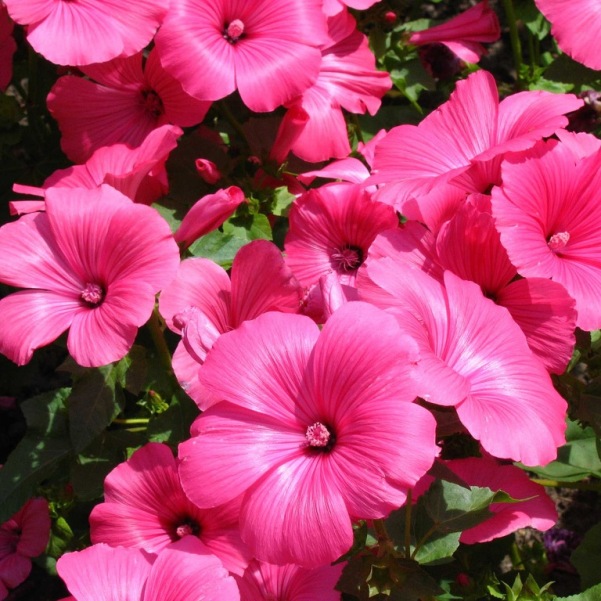
This is a very elegant plant that can beautify any landscape. For lovers of romance and airy mood, it is recommended to grow pink and white laver; its distinctive characteristics are the rich dark color of the deciduous mass and the tenderness of pastel buds. 
The “Tanagra” variety is notable for its short stature and can be used as a border crop. The stem height does not exceed 0.5 meters, and the bud diameter is 5 cm. Traditionally, it is a red variety with a rich color. Such a low-growing plant with white buds is called “Mont Blanc”, and if you want to dilute the riot of colors with a delicate salmon shade, then get a variety of Lavatera “Silver Cup”.
Growing lavater from seeds: how and when to sow
Mainly in individual gardening and large agro-technical holdings, the seedling method is used. To get an excellent result, you need to know: how to sow lavender, and in what period to do it. The timing of planting in greenhouses largely depends on the climatic conditions of the region and the planned flowering period. If the flower bed is to be decorated in May, then the planting of the lavater should be done in early March. Earlier sowing of seeds for the purpose of growing large-sized plants is also allowed.
Before sowing the lavater, you should prepare separate containers for each variety, this will allow you to more beautifully arrange your future flower beds, taking into account the arrangement of flowers according to their color. Thus, you can decide for yourself when to sow lavatory seedlings indoors. Do not do this too early, as seedlings tend to stretch under short daylight conditions. But this problem can be solved with additional lighting.
Growing a lavater from seeds in a seedling method does not require much effort. As a rule, flowers are sown in a container to a depth of 1 cm. Seedlings appear very quickly – after 5 – 7 days. Do not thicken crops. A pick in the phase of the second pair of true leaves into separate pots with a diameter of up to 5 cm. This will be quite enough for the development of a powerful root system. During the cultivation of Lavater seedlings, 3 additional feeding is required with an interval of 2 weeks between each one. The first feeding is carried out 10 days after the picking of the seedlings.
Further cultivation of the lavater requires timely transplantation into the ground. This is usually done after the spring frost has passed. A bright place with a sufficient level of illumination throughout the day is chosen. Wells are being prepared, to which humus and mineral complex fertilizer for flowers are added. Wells are watered abundantly with water. The plant is freed from the cup and buried up to 5 cm above the sepals. Watering in the first 10 days after planting is plentiful daily.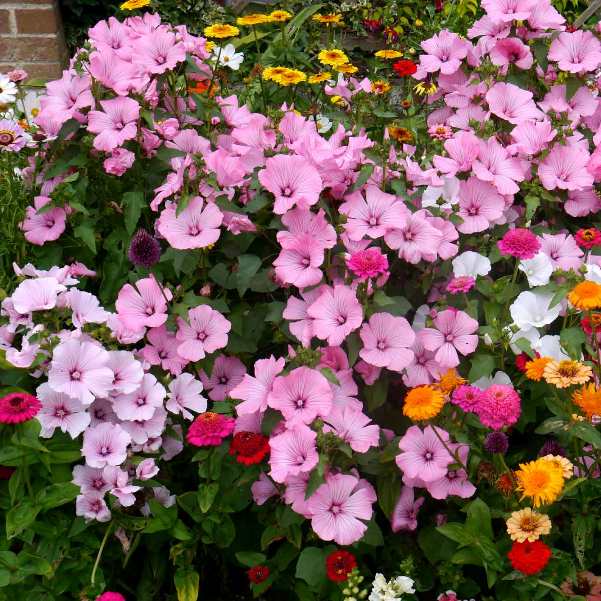
Planting lavatera seeds in the ground
When growing this flowering plant, sowing in spring is possible. For this, the planting of the lavater in the ground is carried out in early May under the covering material. In the places of sowing, grooves are made and seeds are laid there to a depth of 1 cm. On top of the groove, it is worth filling with loose humus or its mixture with garden soil. Water liberally and cover with sufficient sunlight penetration. It is possible to remove the covering material only after the plants reach a height of 5 cm. At this time, the first loosening is carried out with the introduction of mineral fertilizers and light hilling of the stems.
Watering is required as the soil dries up at a depth of 5 cm. Flowering begins 30 days after germination. Next, a photo of the lavater is offered, which was grown by direct planting into the ground without the seedling method.
Lavater care during cultivation
When growing a lavater in a garden plot, you do not need special agrotechnical knowledge and skills. This unpretentious plant can grow on any, even poorly structured clay soils. It tolerates drought and lack of sufficient temperature. For flowering, only 10 – 12 degrees of heat is enough.
The main care of the lavater is the constant loosening of the soil and the removal of weeds. Although this is a rather powerful plant and completely clogs the growth of weeds during its vegetative maturity, in the initial stages of development it needs your help in this struggle for a place in the sun. It is best to combine loosening, weed removal with abundant watering. Plants do not need to be watered daily. One abundant watering is enough once every 7 days. In hot weather, additional watering is possible as needed.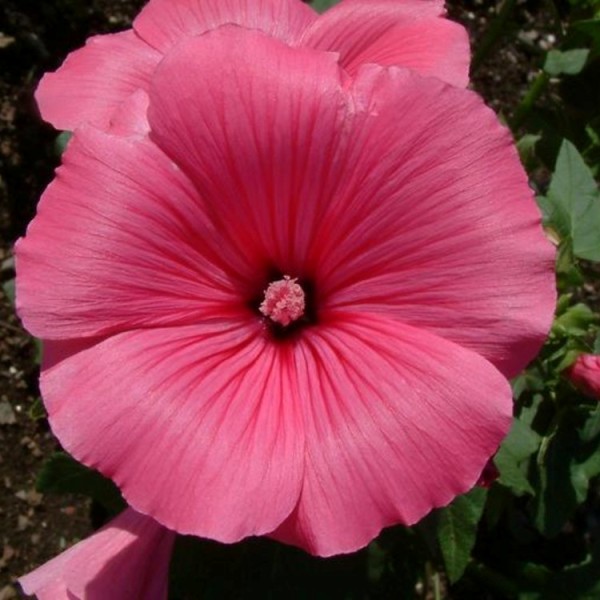
In the process of caring for the lavater, do not forget about timely feeding. If you want to get luxurious bushes with many buds, then you should follow a simple rule. At the beginning of growth, the plant requires a large amount of organic matter and nitrogen in order to develop a powerful root and stem system. After the lavater flower has reached a height of 50 cm, the amount of nitrogen should be reduced and a higher content of manganese, potassium, magnesium and phosphorus should be added. These trace elements contribute to the formation of flower buds and the development of a more intense color of the buds.
When planting lavater flowers in a seedling method, planting in the ground is carried out at a distance of 20 cm from each other. When sowing lavater with seeds, the flowers should be thinned out in the development phase of the second pair of true leaves at the same distance. Unnecessary seedlings can be planted elsewhere.
For tall varieties of Lavatera, such as in the photo, additional support structures may be required to maintain the attractive appearance of the bushes.



